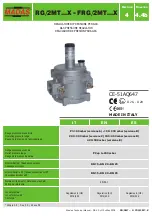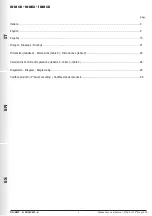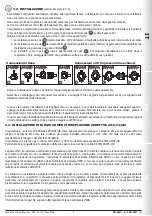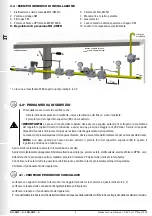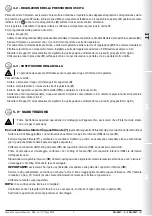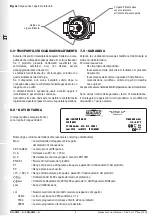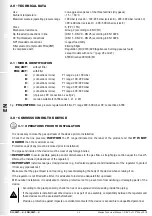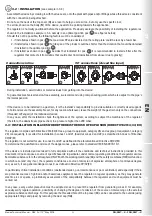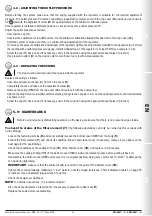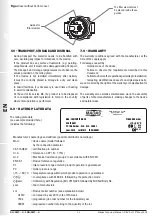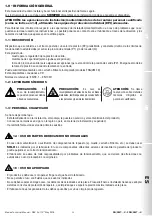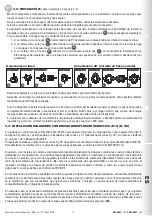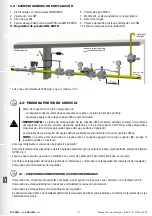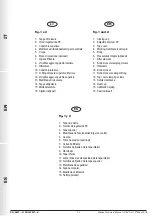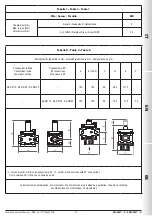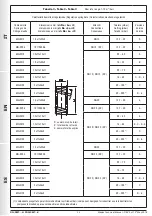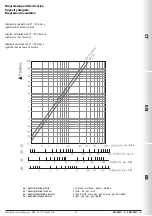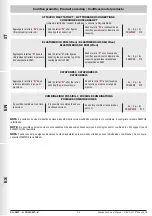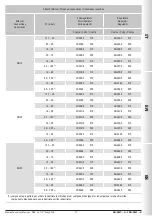
12
ES
EN
IT
Madas Technical Manual
- REV. 0 of 10
th
May 2018
RG/2MT...X - FRG/2MT...X
discharge in
open air
external roof
piping
application
1
2
8
9
10
3
4
5
6
7
7
3.4 - GENERIC EXAMPLE OF AN INSTALLATION
1. M14/RM NC manual reset solenoid valve
2. SM jerk ON/OFF valve
3. FM gas filter
4. OPSO series MVB/1 MAX shut off valve
5. RG/2MTX pressure regulator
6. MVS/1 relief valve
7. Pressure gauge and relative button
8. Gas detector
9. SM remote jerk ON/OFF valve lever control
10. Expansion joint/anti-vibration mount
5 DN
internal thermal unit
non-hazardous ventilated zone*
* if the zone is ATEX classified follow that indicated in 3.3
4.0 - FIRST START-UP
Before commissioning, verify that:
• all of the instructions on the rating plate, including the direction of flow, are observed;
• the small hole of the top cover (
3
) is not obstructed.
• IMPORTANT:
The leak test of the piping must be performed while avoiding to subject the membrane of the
regulator (therefore, the downstream pipe section) to a pressure higher than 200 mbar. Use special manual gas
closing devices to prevent damaging the regulator;
• The pressurisation manoeuvre of the equipment must be carried out very slowly so as to avoid possible damage.
NOTE:
the small hole of the top cover (
3
) must not be obstructed for any reason whatsoever otherwise the
regulator might not work;
• Open the downstream shut-off valve very slowly;
• Open the upstream shut-off devices (e.g. ball valves, solenoid valves, OPSO shut-off valve, etc.) very slowly;
• Wait until the downstream pressure stabilises at the calibration value P2 of the spring (indicated on the rating plate);
• Check the tightness of all the system gaskets and check the internal/external tightness of the regulator;
• Check the operation of the regulator.
4.1 - RECOMMENDED PERIODIC CHECKS
• use a suitable calibrated tool to ensure the bolts are tightened as indicated in 3.2;
• check the tightness of the flanged/threaded connections on the system;
• check the tightness and operation of the regulator;
It is the responsibility of the final user or installer to define the frequency of these checks based on the severity of the service conditions.

